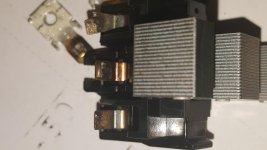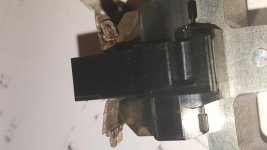Hi all,
I discovered today that one my of nearly new motor contactors was not generating 240V on all three of the terminals when closed (240V, 240V, 12V). This resulted in my 3 phase motor simply buzzing. Initially I thought that my motor was toast, but after when I connected a second motor to this contactor and had the same problem I tracked the problem down to the contactor (not the heaters). At the top I had full voltage, when contacted I get the lower voltage. I redid the wiring and it still exhibited the problem, so I put a new contactor in there and it works fine.
My question - what is going on, and is this common? Could it have been something which I did to damage the unit?
I am now concerned that this failure might occur again, when I am not aware/standing next to it. If it were to fail with such different voltages, is it going to end up frying the motor or would the heaters trip? I really wouldn't want a $25 contactor to destroy an expensive motor.
Any thoughts welcome.
Don
I discovered today that one my of nearly new motor contactors was not generating 240V on all three of the terminals when closed (240V, 240V, 12V). This resulted in my 3 phase motor simply buzzing. Initially I thought that my motor was toast, but after when I connected a second motor to this contactor and had the same problem I tracked the problem down to the contactor (not the heaters). At the top I had full voltage, when contacted I get the lower voltage. I redid the wiring and it still exhibited the problem, so I put a new contactor in there and it works fine.
My question - what is going on, and is this common? Could it have been something which I did to damage the unit?
I am now concerned that this failure might occur again, when I am not aware/standing next to it. If it were to fail with such different voltages, is it going to end up frying the motor or would the heaters trip? I really wouldn't want a $25 contactor to destroy an expensive motor.
Any thoughts welcome.
Don






